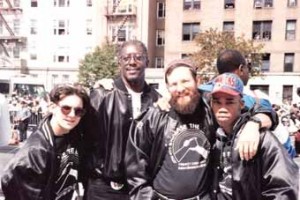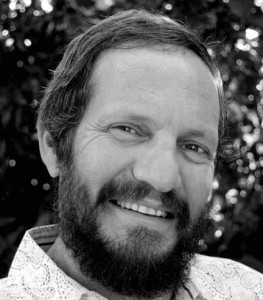Dr. Laz
Photos courtesy of David Lazerson
It was David in the lion’s den. Fresh out of graduate school and a few years out of yeshivah, ba’al teshuvah David Lazerson stood before his junior high classroom in Buffalo’s inner city for the first time. The students in Dr. Martin Luther King Community School in Lazerson’s learning disabilities class were
African American teenagers, all males, many nearly as tall as he. Lazerson is a Lubavitcher Chassid, with a beard and a kippa, a strange sight for his students.
“What you wearing on yo head?” one student asked.
Sarcastic answers and high-fives flowed from the teen’s peers until Lazerson–possessor of a PhD degree in education–gained control of the classroom and explained his religious observance. That morning, some three decades ago, began a unique interaction between an Orthodox Jew and the outside world. In the subsequent years, Lazerson–he’s popularly known as Dr. Laz–has gone on to teach at other public schools in his native Buffalo and in the Miami area, as well as at Jewish day schools in the Greater New York area. He became the Lubavitch community’s point man in dealing with the African American community after the 1991 anti-Jewish riots in Crown Heights, won numerous local and national awards, and wrote several books about his experiences, one of which was adapted into a movie.
“It’s a mitzvah for the Jewish people to reach out to our non-Jewish neighbors and teach them about the Seven Noahide Laws.”
Now sixty, Lazerson is, in the words of New York magazine, “a one-man cliché buster,” a Chassid who sings rap songs and wears a Buffalo Bills kippa, who is equally comfortable layning Torah at his local Chabad shul or taking minority children on Boy Scout camping trips or using his musical abilities to bring a smile to developmentally disabled children and adults.
While teaching in the Buffalo public school system and incorporating the chavruta-style of peer-tutoring among learning disabled students, he was named Teacher of the Year. While serving as founder of Project CURE (communication/understanding/re-spect/education), an interracial grassroots organization that sponsored joint African American-Jewish basketball games, holiday celebrations and dialogue meetings, he was honored by New York’s mayor and governor.
While teaching since 2002 as special education and music director of The Quest Center, in Hollywood, Florida, using hands-on music therapy to influence developmentally disabled and medically fragile students, he was named Broward County’s Arts Teacher of the Year and was inducted into the National Teachers Hall of Fame.
“A big part of what and why I do what I do is that inner feeling of tikkun olam, which is a huge part of Torah,” Lazerson says. “It’s a mitzvah for the Jewish people to reach out to our non-Jewish neighbors and teach them about the Seven Noahide Laws.”
He tells stories of sukkah parties to which he’s invited his non-Jewish neighbors, of African American teens humming one of his songs after he performed, of an elderly African American lady in a wheelchair who was inspired at one of his concerts to stand up and, with assistance, start dancing.
Lazerson tells of Lenny, a particularly troublesome student at the first school he taught at in Buffalo. Under Lazerson’s influence, he became less troublesome. After graduating to high school, he turned up one afternoon in Lazerson’s classroom.
 CURE music group gets ready to perform at a New York City street festival.
CURE music group gets ready to perform at a New York City street festival.
“I came to ask you a special favor,” Lenny said. With some prodding, he told Lazerson what he wanted: “Can I have one of those Jew-hats for good luck?”
Exam time was approaching; Lenny wanted one of Lazerson’s kippot.
Lazerson took a spare “Jew-hat” out of his drawer. Lenny stuffed it in his pocket. He left, and Lazerson rushed to the window.
“Outside, Lenny put my yarmulke on top of his Afro and jive-walked down the street.”
Steve Lipman is a staff writer for the Jewish Week in New York.

